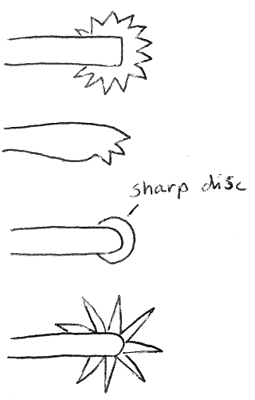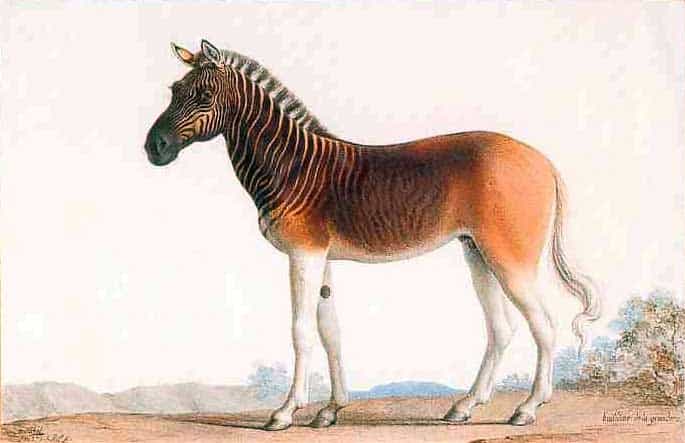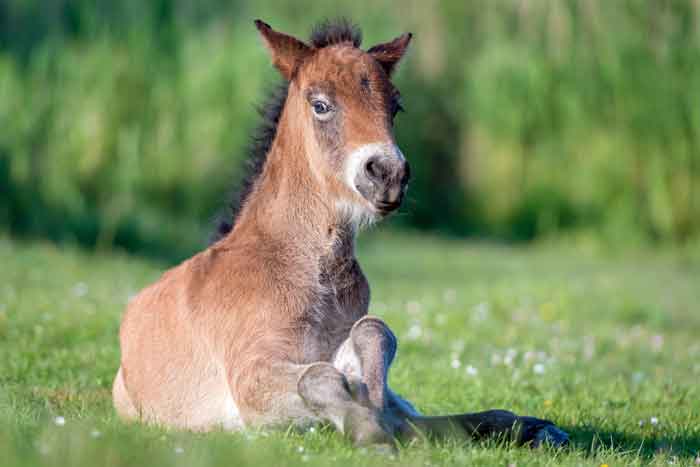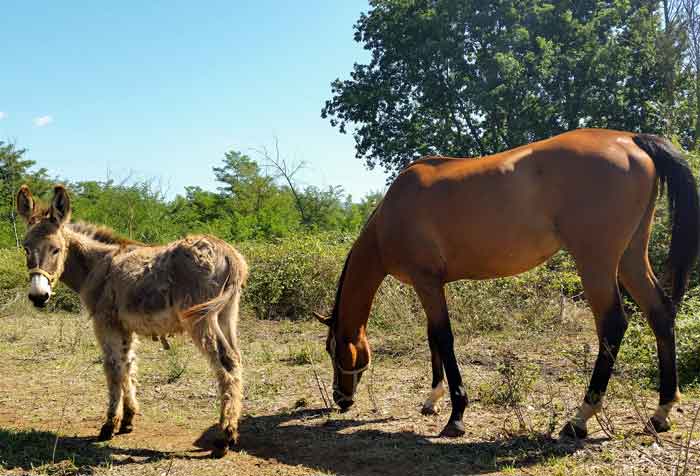You might have seen how horse riders bump the spurs into the sides of the horse. But how does this feel for the horse, does it hurt or will it be unpleasant for the horse in any way?
Do Spurs Hurt Horses?
Horse spurs will normally not hurt the horse. When you poke the spurs into the side of the horse it will feel the pressure but not feel pain. Spurs should be round and not pointy in order not to cause any harm to the horse.
Here are important things to know in order to make sure the spurs don’t hurt the horse.
Table of Contents
What Does The Horse Feel When Getting Poked With Spurs?
When used correctly, the spurs should not hurt the horse in any way. This is because the spurs are not pointy and they never should be. Neither should they be sharp. That would be downright animal abuse and should be reported as such!
There are several regulations about spurs from several horse organizations as we will look at in the next section.
Let’s start by taking a closer look at how any normal spur will impact the horse.
When we are talking about the correct use of a normal set of spurs, they will not harm the horse at all. They will be more like a tiny wake-up call to the horse to let it know exactly what you want it to do.
Here’s a video that shows you exactly how much spurs hurt when you hit it hard against your hand are your feet:
(Skip directly to 3:08 in the video…)
As you can tell, it doesn’t hurt the horse at all when you’re poking the horse with these types of spurs. They are not designed to hurt the horse at all, they are intended to communicate with the horse and they are a tool that is meant as an extension of your feet.
Spurs That Doesn’t Hurt The Horse (And Some That Does)
As we mentioned above, there are many rules and regulations when it comes to the design of the spurs. Each equestrian organization will have its own set of guidelines and regulations.
Here’s an example of how the rules are typically formulated:
Spur designs that are allowed:
Here are some drawings I just made of different types of spurs. First, there’s a list of Spurs that are generally accepted and allowed from the various equestrian organizations.
As you can see, these are generally spurs that are rounded at the tip in order to not cause any pain to the horse.

The most common types of spurs are probably the first one in the list above and the ones at the bottom. The ones at the top are often called “English spurs” and they have a rounded or blunt end. The ones at the bottom have a disc (rowels) that rotates.
It doesn’t make a big difference whether they can rotate or not. The important thing to consider here is the distribution of the pressure.
All of the types above would have a broad tip or several smaller points. This is to make sure that the pressure from your foot is spread over a larger surface. We want to make sure that the pressure is distributed well across several smaller tips or into one large tip. Otherwise, we will end up with a sharp pointy edge that can harm the horse.
It’s very important also to pay close attention to the length of this spur. They shouldn’t be too long. A good length is typically around a 1,5” (4 centimeters).
If you are in doubt about whether your spurs will cause any harm to the horse you should always take it to the vet or to the pet store. There should be specialists who can help you figure it out. Otherwise, they can point you in the right direction in order to find a good horse trainer or veterinarian who specializes in horses.
Spur designs that are not allowed

Here’s the list of spur designs that will almost always be illegal to use in any competition or in general. These are the signs that are pointy or sharp at the edges.
The spur should never be pointy or sharp in order to cause any unnecessary harm to the horse.
It doesn’t make a difference whether the spikes are mounted as a disk or if they are built into the tip. Either way, it would hurt the animal and it would be animal abuse to use any of these types of spurs.
You should also pay close attention to old spurs as they might become sharp or pointy overtime unintendedly. This can happen because you are wearing your boots in the sand and dirt which will eventually wear down the spurs. This might cause a bump or a sharp edge by accident.
Are Horse Spurs Considered To Be Cruel?
Most organizations and competitions will allow for horse spurs and they are not considered to be cruel toward the horse. As long as the rider sticks to the rules we laid out (above) regarding the design of the spur.
But some people have been found to sharpen the spurs and that’s definitely cruel to the poor animal. That should never be tolerated and such behavior should be reported as animal abuse immediately.
So you should always make sure you are using spurs correctly and make sure you are not accidentally bumping your heels into the ribs of the horse.
Do All Riders Use Spurs?
Not all riders use spurs with the horse. Some riders prefer to simply bump the heels of their boots into the rips of the horse.
This is a more gentle way to prompt the horse to do what you want. But it also takes a lot of practice because it’s typically easier to maneuver the horse around when you are using spurs.
There are many opinions on how spurs should be used and not be used. Some riders prefer not to use spurs because they are experienced or because they think they might harm the horse. Bet that ladder shouldn’t be the case especially if you are using them correctly.
Should I Use Spurs As A Beginner?
Many riding instructors are telling beginners not to use spurs at all. This is generally good advice because you need to know exactly what you’re doing before you start working with spurs. You might even be a really good rider without them and never have to use them.
But there are also many horse trainers who think that a beginner should definitely use spurs. This is because it is easier to control the horse when you can use the spurs.
So, it’s really a question about what you like and how your horse trainer looks at it.
I think spurs are great as long as you learn exactly how to use some well. When you’re know how to use them they can be a good instrument and help you communicate more clearly to the horse. It will give the horse a better understanding of what you want to accomplish whenever you try to communicate with it.
It will also make it easier for you to feel safe on the horse because it’s easier to use the spurs than to use the heel of your boot.
How To Make Sure The Spurs Doesn’t Hurt The Horse
Here you need to examine the spurs and pay close attention to how they are constructed. As we mentioned above, they shouldn’t be too pointy but on the other hand, they should also be big enough in order to work.
They are a tool to let the horse know when you want to make a turn.
Control your feets movement
If you’re not in full control of your legs at all times you might hit the horse without you noticing it. This can be very dangerous as the horse might react to you your commands.
If you accidentally hit the horse with your spurs it might start turning to the side or ride faster. It might also just get confused because you are sending mixed signals. This is because the horse might not know when you are poking it consciously and when you’re doing it by “accident”.
Either way, it’s not really ideal because it will decrease your control over your horse and the situation.
You want the horse to know exactly what you intend to do at all times so you can make up a good team together.






